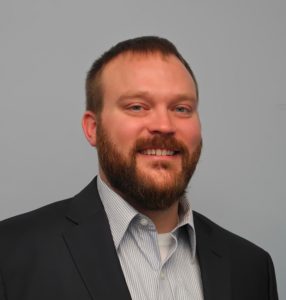Read Chris’s Emerging Investigator article, ‘Sustained release of drug-loaded nanoparticles from injectable hydrogels enables long-term control of macrophage phenotype’, DOI: 10.1039/D2BM01113A
Check out our interview below:
1. How do you feel about Biomaterials Science as a place to publish research on this topic?
Biomaterials Science continues to be at the top of my reading list and is an outstanding outlet for communicating work related to material structure, composition, and biological function. Moreover, the journal has welcomed new directions in immune modulation and engineering that are critical areas of research growth as biomaterials continue to evolve as platforms for the understanding and therapeutic manipulation of either individual cell types or immune cell networks. Given the journal’s standing interest in biological applications and translation towards clinical use, it was an obvious choice for publishing our current work that focuses on developing polymer-nanoparticle hydrogels for local macrophage-targeted drug delivery.
2. What aspect of your work are you most excited about at the moment and what do you find most challenging about your research?
The most exciting parts of this work are two-fold. First, we were interested in identifying drugs that could alter macrophage behavior – inhibiting inflammation while encouraging pro-healing behaviors. This was particularly challenging because it required the development of new drug screening methods as well as follow-up analysis in immune cells from both mice and humans to ensure drug activity was genuine. Finding a drug that meets these criteria is exciting for the immune modulation field, and we hope it will have broad applications in wound healing and regenerative medicine. The delivery of such immunosuppressive drugs, however, is often a problem clinically. This is because delivery throughout the body places patients at a greater risk of infection. The hydrogels developed overcome this by locally targeting drug delivery to specific cell types, potentially avoiding systemic immune suppression. I expect these materials to become a platform for delivering a library of suitable drugs, concentrating effects at the injection site while limiting off-target effects throughout the body that have continually derailed clinical trials.
3. In your opinion, what are the most important questions to be asked/answered in this field of research?
Some of the most critical and under-explored topics in immune modulation are related to how immune systems change in response to perturbations, including both injury and therapeutic delivery. Too often, cell types or single tissues are considered in isolation. In the context of macrophage-targeted therapeutics like the ones discussed here, it remains an open question as to which cells are best to manipulate. We can surely change the behavior of macrophages locally through drug delivery, but is this the most impactful approach? Considering the systems physiology, these cells generally have a short lifespan and are continually replaced by precursors from the bone marrow. Emerging evidence suggests that profound changes in these precursor cells drive long-term response to injury and link inflammatory co-morbidities (e.g., gum and heart disease, stroke and heart attack). Addressing these types of questions requires a broader systems biology thinking and is difficult to directly address experimentally. These are the types of problems we are beginning to address in my research group, which would not be possible without unique biomaterials platforms.
4. Can you share one piece of career-related advice or wisdom with other early career scientists?
Be happy. Just like Marie Kondo, find what sparks joy and hold onto it. It might be the location, environment, people, type of research, or any combination of these. I believe everyone is most productive in their life and work when they are happy. And frankly, you deserve it. Whether it’s a degree program or a long-term career, it’s a long-haul and you should be excited by what you do and where you are.
Find out more about Chris’s Tissue Instructive Materials lab on his website
Follow Chris and his research group on these social media:
Twitter: @ChrisRodell2 @DrexelBiomed











